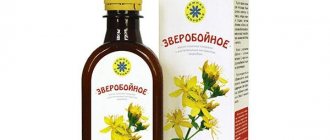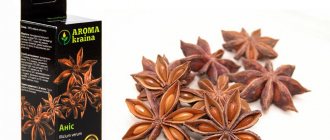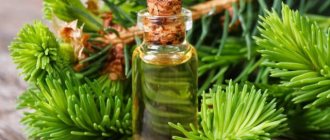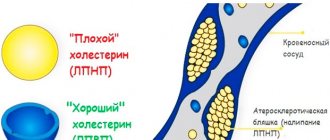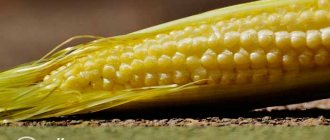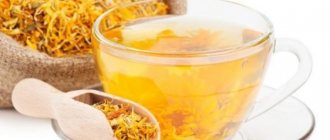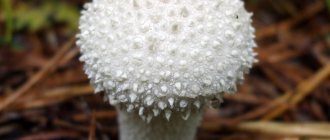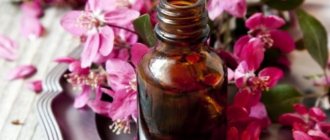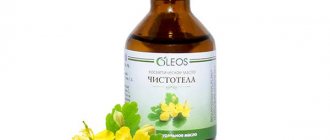Swelling of the legs is a widespread problem. It happens that you run home for lunch, sit for half an hour, start putting on your shoes, but you can no longer fit into your shoes. Or you woke up in the morning after a hard shift and couldn’t get back on your feet. Edema is an occupational disease of teachers, cashiers, salespeople, hairdressers, etc. Fortunately, this scourge can and should be fought. And we will tell you how best to do this at home in our article.
Treatment of leg swelling using traditional medicine
Swelling of the legs, in itself, is not a disease, but a consequence of another disease or poor lifestyle. So, due to sedentary work, the legs and feet swell. And in the summer, during the heat, swelling is explained by the expansion of blood vessels. Swelling also occurs due to disturbances in venous circulation and inflammatory processes. A sign of varicose veins is asymmetrical swelling. If, in addition to your legs, your face also swells in the morning, you are talking about kidney disease. The swelling that occurs after a long walk, and is accompanied by back pain, a pulsating vein in the neck, clearly indicates disturbances in the functioning of the heart and kidneys. Swelling can also be symptoms of very serious ailments, such as sarcoma or diseases of the genital organs. Therefore, if edema has become a constant element of your life, you need to find out with a specialist the nature of its occurrence.
Treatment of leg swelling
If you decide to take care of your health at home, traditional medicine will come to your aid.
Herbal tinctures and decoctions for swelling of the legs
Since edema is a consequence of fluid stagnation in the body, you can try taking natural diuretics. Pumpkin (baked, boiled, in the form of porridge and pumpkin juice), if consumed at least twice a week, will help cope with edema, diseases of the kidneys, bladder and heart. Mix the juice of 1 medium lemon , 100 ml of carrot and the same amount of cucumber juice - you get a light diuretic medicine. Take three times a day, diluting with boiled water at room temperature. Mint has the same effect . Pour 2 tbsp. spoons of dry raw materials 0.5 liters of boiling water and let it brew for 20 minutes. Drink instead of tea, a couple of times a day. Pour boiling water over 1 tbsp. spoon of flax seeds , boil for 15-20 minutes. Let it sit for an hour. Drink 100 ml warm every 2 hours for 14 days. Chop the elderberry root . Pour 150 g of raw material with vodka (1:2). Infuse for 10 days. Then strain. Drink drops three times a day according to the following scheme: days 1-3 – 10 drops, days 4-6 – 15, days 7-9 – 20 drops. Viburnum infusion is taken for edema due to cardiac dysfunction. To prepare, pour 2 tbsp. spoons of viburnum berries with a glass of boiling water. Simmer in a water bath for 20 minutes. Let it brew for 45 minutes, then strain. Take 3-4 times a day, a third of a glass.
Viburnum infusion
Take 1 tbsp. spoon of St. John's wort , 1 tbsp. a spoonful of corn silk and 1 teaspoon each of valerian root, motherwort, calendula flowers, adonis herb . Mix all the ingredients and pour a liter of boiling water. After the broth has infused, add honey to taste. Drink half a glass 4-5 times a day. Birch tea will also help with swelling . Steam the Art. spoon with a heap of birch leaves with a glass of boiling water. Wrap in a towel and let the tea brew for 10 minutes.
Birch tea
For swelling caused by rheumatism and kidney problems, bean decoction . Chop the dry beans. Steam 1 tbsp. spoon of raw materials 0.4 liters of boiling water. The broth is infused for 1 hour, then filtered. Drink half a glass hot three times a day. Horsetail is a good remedy for edema, kidney and bladder diseases, and hypertension. It is harvested in the summer, best in July. Tea is brewed from horsetail. People weighing up to 70 kg will need 1 tbsp. a spoonful of chopped herbs per glass of boiling water, for more obese people - 2 tbsp. spoons.
Horsetail
Folk remedies for leg swelling during pregnancy
- To overcome this unpleasant deviation, it is recommended to rub swollen limbs with boiled garlic pulp twice a day. You can prepare it by pouring a large spoonful of chopped garlic into two glasses of water and boiling the mixture over medium heat.
- A decoction of birch leaves is especially effective in combating this disease. It is prepared extremely simply, you need to place a tablespoon of birch leaves in some iron container and pour boiling water over them (about one hundred grams of boiling water). Then the mixture should be left for thirty to forty minutes to infuse. This medicine must be consumed four times a day in a volume of fifteen to twenty milliliters (about one large spoon).
- To combat swelling, it is also recommended to consume milkweed juice and egg yolk. One chicken yolk and five grams of milkweed juice should be mixed and the mixture consumed three times a day. The taste of this medicine is quite pleasant, so there is no need to mix anything additional into it.
- Sometimes herbal baths help to cope with this deviation. To prepare one such bath you will need the same amount of mint, birch leaves and field chamomile flowers. After this, you need to pour one hundred grams of the resulting mixture with a liter of boiling water and when the water has cooled to an acceptable temperature, steam your feet in it until it cools down.
Foot baths for swelling
Baths will help relieve not only swelling, but also tired legs. Thanks to the naturalness of all components, they can be made even by pregnant women.
Fill a bowl with cold water, dissolve 300 g of rock salt in it and soak your feet for 5-10 minutes. Then lie on your back and place your legs higher than your body (for example, on the headboard). Contrast baths also work well: alternately keep your feet in cold and hot water for 5 minutes. Baths can be with sea salt or with medicinal herbs. Brew 100 g of a mixture of birch leaves, chamomile and mint. Let it brew for 1 hour, add to hot water and steam your feet well. For 1 liter of boiling water, take half a glass of sea salt, 1 tbsp. a spoonful of soda and dry mustard and 100 g of juniper berries. Dilute with hot water and for 10-15 minutes. steam the legs.
Foot baths for swelling
Compresses and ointments for swelling of the legs
Make a compress from raw grated potatoes. Apply the potato mixture to the swollen areas and secure with gauze. Keep it for 15-20 minutes. Remember the large cabbage leaves until they release their juice. Make a compress for your feet, bandaging the top with gauze. Using the same principle, you can make a compress from horse sorrel. Add 0.5 kg of iodized salt (in a 2:1 ratio) to the melted chicken fat. Mix well. Make compresses from the cooled substance at night. In the morning, be sure to do a contrast shower for your feet. Mix camphor and olive oil (1:1), rub the resulting liquid on your legs to the knees. Then wrap your legs in cotton cloth and put on wool leg warmers with a weak elastic band (don't let them dig into your legs). You can try a cold massage. To do this, freeze ice in advance from decoctions of medicinal herbs (chamomile, birch leaves, mint, yarrow, horsetail, etc.). Wear gloves and gently massage problem areas with ice.
Complex treatment of edema
We recommend that you undergo comprehensive home therapy, which is designed to treat “professional” swelling of the legs and swelling that occurs with varicose veins.
Week 1: use salt baths. To prepare them, dissolve 1 kg of rock salt in an enamel bucket of water. Keep your feet in the resulting solution at room temperature every evening for 30 minutes. It is better to do the procedure in a bucket to remove swelling from the lower leg.
Week 2: Rub your feet with a chilled herbal tincture. Mix 1 tbsp. a spoonful of propolis, birch leaves, horsetail, mint, yarrow. Pour in 0.5 liters of vodka. Let it brew for 10 days. After the expiration date, strain through cheesecloth and squeeze out the raw materials. It is advisable to store the tincture in the refrigerator.
Week 3: make cabbage compresses all night.
Week 4: break.
Repeat the course 3-5 times depending on the stage of the disease.
Methods of therapy
Treatment implies an integrated approach to pathology, regardless of the stage and complexity of the process.
For kidney and heart damage
Fluid accumulation occurs not only on the lower extremities, but also on the upper extremities, under the eyes. The transition to a horizontal position changes the location of the swelling, but does not lead to its disappearance. Local medications do not give the expected results; recovery requires restoration of the normal functionality of internal organs and stabilization of the water-salt balance.
Patients are prescribed diuretics:
- potassium-sparing type - to remove fluid and preserve potassium ions, treatment is carried out with Veroshpiron, Eplerenone, Spironolactone;
- loop - excess moisture along with useful substances is removed by Torasemide, Furosemide, Uregit;
- thiazide - arterial hypertension, cardiac, hepatic, renal failure is treated with Indapamide, Hydrochlorothiazide.
For complex therapy, cardioprotective agents and potassium preparations (in addition to diuretics) are used. Medicines are prescribed only after receiving the results of blood and urine tests.
With venous origin of the pathology
Vein diseases are not local in nature; clinical manifestations in the form of edema indicate a general problem in the vascular part of the body. For treatment, external and systemic medications are used:
- phlebotonics - improve local blood flow, reduce the risk of blood clots, suppress inflammatory processes and swelling (Troxevasin, Lyoton);
- venotonics - are responsible for increasing the tone of the vascular walls, normalizing the functioning of the vein valves that regulate the correct blood flow in the lower extremities (Venarus, Detralex, Phlebodia 600);
- angioprotectors – reduce the permeability of venous walls, increase elasticity and firmness (Troxevasin, Bilobil Forte, Ascorutin);
- antiplatelet agents - prevent thrombus formation, normalize blood parameters in terms of viscosity and fluidity, metabolism, have an antispasmodic, vasodilating spectrum of action (Aspirin Cardio, Aescusan).
When treating varicose veins, the fight against the pathological process takes place in all directions. Those using drugs provide:
- venotonic;
- angioprotective;
- antiplatelet type of action.
Pharmaceutical companies produce complex medications for the treatment of varicose veins that have all of the above functions. A representative of such drugs is Angionorm, which, in parallel with the main spectrum of action, increases performance indicators and provides an analgesic effect.
Physiotherapy
Physiotherapy
Simple exercises will help prevent swelling, which, if performed daily, will become the best prevention.
Walk barefoot (without socks) on the floor every day for at least half an hour.
Walk without shoes on your toes.
Stretch your joints by making circular movements with your feet.
In the morning and evening, do “bicycle” and “scissors” for a minute while lying on your back. This will help restore uniform blood circulation.
After 45 min. sitting still, you need to warm up. At work, you can do this in the restroom. While standing, roll from heels to toes for a few minutes. Bend and straighten each leg a couple of times. Squat down and straighten up 5 times.
Prevention of edema
To prevent swelling in the future, avoid socks with tight elastic bands and stockings that tighten your legs, impeding normal blood circulation. It will be useful to include natural diuretics in your daily diet (herbal teas, pumpkin, cranberries, melon, strawberries, grapes, eggplant, tomatoes, cucumbers, etc.). Never turn down a piece of watermelon.
But it’s better not to indulge in salty foods, brewed coffee, black tea, or alcohol. You can drink it for the last time 2 hours before bedtime. It’s good if it’s boiled water, juice or herbal decoction. In the morning, it is useful to start with a glass of water 15-20 minutes before. before breakfast. And of course, take care of your feet. If you have been standing for a long time, take every opportunity to sit down and vice versa.
Video - Treatment of leg swelling using traditional medicine
Swelling of the legs is a common phenomenon, which can be caused by various factors. Quite often, the legs swell in representatives of those professions where they have to stand a lot of time (teachers, salespeople) or sit with their lower limbs bent (cashiers, seamstresses, drivers).
Treatment of leg swelling with folk remedies gives good results. The use of various compresses, decoctions, and baths in most cases will be much more effective than traditional treatment.
Leg swelling treatment with folk remedies
Good afternoon
We, the Valitov brothers, and the entire team of authors of our blog welcome all our readers to tell you about such a common ailment as swelling of the legs. People often encounter them when, putting on their favorite shoes, they feel that they have somehow become too tight for them.
The reason for this is a violation of the mechanism of coordination of water-electrolyte balance in the body.
At the same time, folk remedies for swelling of the legs can be the first to help a person.
However, if edema does not respond well to traditional methods of treatment, then you should not leave this situation to chance, but rather consult a doctor.
Since possible root causes may hide serious diseases that are dangerous due to their unpredictable complications.
This may be damage to the lower extremities, a violation of the integrity of the structure of the skin with ulcers or gangrene, the treatment of which is often associated with surgery.
What is edema? How are they classified? What symptoms are manifested? What provokes the appearance of edema in the lower extremities, what traditional medicine is used to treat them.
All this will be discussed further.
Stay with us to find out more!
Main reasons
The accumulation of fluid in muscle cells leads to swelling.
Due to the laws of gravity, it is the legs that most often suffer from swelling. Swelling of the legs can occur in healthy people as a result of heat, regular consumption of salt in excess of the daily norm, prolonged stay in an uncomfortable position, as well as in women during the last months of pregnancy. Sometimes the cause of swelling of the legs can be various diseases:
diabetes; heart or pulmonary failure; disturbances in the functioning of the circulatory system - varicose veins, thrombosis and others; liver damage; kidney disease; oncological processes in the body; hormonal imbalances.
Elderly people are more likely than others to encounter the problem of fluid stagnation in the lower extremities.
Before you begin treatment on your own, you need to undergo examinations and find out whether swelling of the legs is a consequence of a serious illness. If no pathologies are found, you can safely begin to select the most optimal option for how to effectively relieve leg swelling at home.
Main signs
What signs indicate that you have excessive fluid accumulation in your calves, legs, feet, or ankles? An unpleasant sensation appears during a long walk, the legs quickly get tired, and usually comfortable shoes begin to press. Pressure spots may appear on the skin from straps and fasteners. Even wearing thick socks causes discomfort.
Sometimes persistent swelling can lead to deformed feet or ankles.
There is such a way to check for possible swelling of the legs: you should press your finger on the lower limb, if the skin quickly smoothes out and a depression does not form for a while, there is no swelling. Otherwise, we can say there is a problem.
Diuretics
Decoctions of diuretic herbs help against the accumulation of fluids in tissues. They reduce the level of intoxication and activate the removal of the edematous process. These remedies are considered folk recipes based on:
- chamomile;
- sequences;
- mint;
- burdock root;
- elderberries;
- motherwort;
- arnica
Decoctions of these herbs can relieve swelling that affects the legs. The prescribed treatment involves making decoctions once a day. Take before meals. When the legs swell, the following is used to prepare the remedy:
- 1 teaspoon chopped herb;
- 1 glass of boiling water;
- 30 minutes of infusion.
- drink before going to bed.
If swelling is caused by improper functioning of the kidneys, elderberry is the best way to relieve severe swelling using traditional methods. Severely damaged vessels may not be able to remove excess fluid on their own. If you make decoctions, the amount of moisture will begin to decrease naturally.
It is important to observe the frequency of doses, otherwise the treatment method will be ineffective. Anti-edema products can be used at any age. Properly formulated recipes relieve most swelling.
Diuretics
Treatment with folk remedies involves the use of both simple methods and multi-component recipes with a precise regimen for use externally or internally. Herbal infusions, baths, lotions or compresses perfectly help relieve swelling.
Most often, swelling is relieved thanks to decoctions that have a diuretic effect. There are different ways to cope with puffiness; below are some of the most well-known and frequently used remedies:
A very simple diuretic recipe will help you get rid of swelling in your legs. To prepare it, you need to mix lemon, cucumber and carrot juices in equal quantities (about half a glass of each). Dilute the composition with water to obtain an acceptable taste. Divide into 3 equal parts and drink three times a day. Swelling will go away if you use mint infusion . To do this, pour 30 g of peppermint into a liter of boiling water, after which the folk remedy that helps with swelling of the legs is infused for about an hour and allowed to cool to room temperature. Take the drink in small quantities several times (more than three) throughout the day.
For swelling, it is useful to take an infusion of corn silk. A tablespoon of the component is poured with hot water (200-220 ml). After 5 minutes, the product can be strained. You need to take the infusion 3 times a day, a glass. In this case, those people who have heart problems should be careful. Folk remedies based on corn silk or sunflower roots should be used under the supervision of a physician, since their use can lead to disturbances in the salt and mineral balance of the human body. Parsley is a useful plant for those who want to get rid of swelling of the legs. For a tablespoon of chopped parsley roots you will need 500-550 ml of boiling water. The mixture is allowed to brew for 12 hours. Before taking, the decoction must be strained. A single serving is a tablespoon. You can also get rid of swelling with the help of hawthorn (flowers and dried fruits). Brew it this way: pour a tablespoon with 500 ml of boiling water and leave for 30 minutes to an hour. Take the product between meals 3 times a day in the amount of 1/3 cup.
Herbs that help with swelling of the legs also have a diuretic effect: chamomile, string, mint, motherwort, burdock root and others. They not only help relieve swelling, but also reduce the level of intoxication in the body.
How to relieve swelling of legs during pregnancy
Obstetricians and gynecologists treat edema in pregnant women. They often prescribe herbal preparations and give advice to avoid the appearance of edema.
Edema in pregnant women is a fairly common reason to go to the hospital. For pregnant women, the presence of edema is determined as follows: place the woman on the couch and press firmly on the site of the swelling. If there is swelling, a hole remains. In healthy people, the skin immediately rises into place. To remove excess fluid, you should take a bag of orthosiphon stamen, pour boiling water over it, and drink it twice a day, for no more than a week. Be sure to take any diuretics only as prescribed by a doctor. Since microelements useful for the fetus are excreted along with urine: calcium, magnesium, potassium.
If you take diuretics for a long time during pregnancy, after a year the woman risks losing her teeth, or the child may be born very weak.
It is important when taking diuretics to make yourself a vitamin salad from: dried apricots, raisins, prunes. It is not recommended to take complex vitamins.
During pregnancy, dill seeds should be drunk very carefully; the decoction, like all diuretics, removes a lot of vitamins and beneficial microelements. It is prohibited without a doctor's recommendation.
Puffiness of the lower leg is not only discomfort and pain, but also a visible defect that repels interesting looks. You can cope with edema forever only by eliminating the main cause of the underlying disease. Attempts without following this rule are as effective as “water through a colander,” and only useless treatment.
Tags: health, swelling
- Related Posts
- How to determine the type and shape of a woman’s breasts, find out the size and choose the right underwear, size tables and their interchangeability
- Myths about collagen and the harsh reality of fibrosis
- What proportions of a female body can be called ideal - parameters of a woman’s figure in the tables
« Previous entry
Relieving tension with baths
The use of baths that have a gentle effect on the lower extremities helps to get rid of not only swelling, but also fatigue. Herbal decoctions for this procedure are prepared based on clover, dubrovnik, figs, chamomile, aromatic rush and other medicinal plants.
Recipes for some herbal infusions that help relieve swelling from the leg:
To 100 g of juniper berries, add mustard powder and baking soda, taken in equal quantities (1 tablespoon each). The mixture is infused for 1 hour. After that, manipulations are carried out for 10-15 minutes in a well-warm decoction. You can also treat swelling with an infusion made from chamomile, mint and birch. The decoction is prepared from 100 g of dry mixture poured with boiling water. You need to insist for about an hour. The prepared product is added to hot water, into which the feet will be immersed for the manipulation.
There are other recipes that will tell you how to get rid of swelling thanks to foot baths:
Puffiness is relieved thanks to a bath using 100-200 g of sea salt. Sometimes a little apple cider vinegar is added to help remove excess fluid and make the skin more elastic and firm; A traditional procedure for relieving swelling is contrast baths, when the legs are kept alternately in hot and cold water for 5 minutes.
These and many other methods provide information on how to relieve swelling in edema of the lower extremities.
Causes of edema
Often the cause of edema of the lower extremities is:
- Genetic predisposition, usually in people with diabetes;
- Obesity due to poor nutrition, which provokes increased mechanical pressure on the lower extremities;
- Muscular insufficiency of the venous walls or lymph stasis with varicose veins;
- Sedentary lifestyle due to sedentary work, after surgery or fracture;
- Kidney failure;
- Pathology of the osteoarticular or cardiovascular system;
- Large load on women's legs during pregnancy.
Using medicinal compresses and lotions
How to treat swelling of the lower extremities depends on the frequency of the problem and the reaction of the human body to certain components of folk remedies. In most cases, it is recommended to relieve swelling using compresses based on a paste of raw potatoes, white cabbage leaves, horse sorrel, chicken fat, olive and camphor oil.
In addition to using one of these remedies, you can do a cold massage before bed or after a hard day at work using ice cubes frozen from a decoction of various medicinal herbs. Puffiness is also relieved with the help of a tincture of Kalanchoe leaves crushed into a pasty state . It is necessary to fill the container halfway and fill it to the top with vodka. The product should stand for about two weeks in a dark place, after which every day before going to bed, rub your ankles with this tincture until they are completely dry.
How to relieve swelling of the legs using the proposed folk remedies, and which of the above methods to use, is determined by each person depending on the individual characteristics of his body. It is also necessary to remember about possible allergies to certain components of the recipes and begin treatment carefully in order to achieve the desired result and forget about the problem of swelling of the lower extremities for a long time.
Swelling of the feet is a common problem that affects many people. Before you treat edema using traditional methods, you need to find out why it appeared. Edema often appears due to circulatory disorders, if there are problems with lymphatic drainage, disruptions in the functioning of the heart, and blood vessels. You may need to pay attention to shoes; choose high-quality and comfortable ones.
Effective folk remedies against swelling of the legs
The following folk remedies for swelling of the legs are known:
- In case of physical fatigue after stress on the lower extremities, flax grains (seed) help. To prepare them, you need to boil the broth for a third of an hour, then it sits until completely cooled for about sixty minutes. Unfortunately, the taste of such a drug leaves much to be desired, so it is not forbidden to add a couple of tablespoons of natural juice after cooling, preferably citrus juice, moreover, it is easily squeezed out of the fruit. It is advisable to drink the prepared decoction in a heated form, one hundred milliliters about seven times a day.
- Foot baths for swelling are no less useful; they perfectly relieve symptoms. Salt, preferably sea salt, copes with swelling from fatigue quite well. The water for preparing the solution should be slightly colder than body temperature. You can use simple table salt. Feet should be immersed when the salt has completely dissolved, hold for five minutes, then take a piece of porous fabric, dip into the bath and apply as a compress on the leg below the knee.
- To stimulate urine output and, as a result, remove excess fluid from the body, the same compress, but only with warmer water, is applied to the lower back. You should also hold it for no more than five minutes.
- Before you begin hygienic washing, lie in warm water with a decoction of chamomile purchased at the pharmacy poured into it. Clover or rush grass, which can be purchased at the market from grandmothers or in a specialized department, are no worse.
- Kalanchoe infusion. To prepare, fill a half-liter container with fresh leaves of the plant, do not compact it. Fill to the brim with fifty-proof alcohol or vodka. Then close it tightly and place it in a dark room for half a month. With this infusion, you need to rub your feet with massage movements.
- A cocktail of liquid honey and dry wine relieves swelling. You need to mix in a ratio of two parts wine to one part honey. If you drink a quarter glass three times a day before meals, excess fat deposits will be intensively burned.
- Parsley decoction. Finely chopped fresh plant is placed in a container with water just brought to boiling temperature. Let it sit for a quarter of an hour and filter. Drink a glass immediately after preparation. Do not store.
On a note
Parsley is one of the best natural diuretics.
When you suffer from swelling of the limbs, it means that you have accumulated too much fluid in your body. Parsley removes all excess fluids from the body, which is why it is an excellent remedy for treating swelling.
Be careful! If swelling of the lower extremities is caused by any diseases, then they should be treated. To do this, contact your therapist or use folk remedies, but only if you know what kind of disease you have.
You should also know that diuretics and folk remedies remove excess fluid not from areas of edema, but from blood vessels, muscles and connective tissues.
Getting rid of swelling in the ankles
Some people advise taking diuretics; they relieve swelling on the ankles. But you can’t experiment; it’s best to consult a doctor about swelling. Diuretic medications do not treat swelling, they get rid of it, but the cause remains. Most often, swelling is caused by blood stagnation. For the purpose of prevention, it is recommended to perform the following set of exercises daily:
1. Rotate each foot - first in one direction, then in the other, while kneading the joints well.
2. First spread out, then bring your toes together. Do the exercise for each leg.
3. Walk on your toes, this way you will train the rise of your feet.
Exercises are suitable for the treatment of all types of edema; with their help you can get rid of blood stagnation and swelling.
Causes of leg swelling
Reducing swelling is certainly easy if you choose comfortable shoes that fit exactly and do not pinch anywhere. It is necessary to insert orthopedic insoles inside the shoes, buy shoes with raised heels, but in no case with long heels, they contribute to the development of swelling.
First of all, the cause of edema may be impaired renal function. Edema on the back of the legs and itching are the first signs of this. If bruises appear on the eyes, you should immediately go to the hospital for a kidney examination.
If you have recently had a common cold and swelling has appeared, most likely this is a simple complication manifested by a fragile body. In this case, you need to wait - after a while the swelling will subside. Be careful, as sick kidneys and swelling can be the cause of an infection that has settled in the body. After a bruise or injury, your legs may well begin to swell. Simple fatigue or prolonged wearing of shoes and standing work can be no less a cause of swelling.
Treatment of lymphedema of the legs
Occurs due to impaired lymph outflow. Most often it is a consequence of a serious leg injury. The disease can be treated in different ways, it is recommended:
1. Massage the feet and ankles.
2. Consume salt as little as possible.
3. Do physical exercise.
4. Swim, do water aerobics exercises.
5. If lymphatic drainage cannot be restored for a long time, it is necessary to pay attention to other treatment methods.
Treatment method for cardiac edema
The first step is to find out the reason why the swelling appeared. In case of heart failure, it is necessary to throw your legs higher than your body, so that a sufficient amount of blood will flow to the heart.
Foot baths with various herbs, sea salt help a lot, perform a massage, use cooling compresses. Please note that these methods can only cure mild forms of cardiac edema. In case of advanced severe edema, you need to closely monitor cardiac activity and additionally take diuretics, this way you can remove excess fluid from the body.
Traditional effective methods for treating leg swelling
The advantages of these medications are that they have no side effects on the body; they do not contain chemical components and flavorings, but natural, high-quality products. Pay attention to these common recipes:
1. You need to mix 100 ml of juice from lemons, carrots, and cucumbers. You should get 50 ml of a diuretic drug. Then add warm water and drink in the morning, afternoon and evening.
2. It is advised to use the recipe of the famous folk healer Vanga. To do this, you need to take the yolk of an egg, euphorbia (juice) - 3 grams. Drink for breakfast, lunch and dinner. With this recipe you can forget about swelling for a long time.
3. Mint infusion is used to treat swelling. To prepare a healing remedy, you need to take mint - 25 grams, boiling water - 1 liter. Leave for about an hour, cool to a temperature of 25 degrees. Drink in small sips three times a day until the swelling completely goes away.
4. Flax infusion relieves swelling; it is easy to prepare. You need to take flax seeds - a tablespoon, boiling water - 1 liter, boil for about 20 minutes. Leave for about an hour, filter. Drink 100 ml of infusion every 3 hours. The course of therapy is 1 month.
5. Warming compresses with the addition of camphor oil have been proven to help. Everything needs to be mixed thoroughly. Apply completely to your legs, starting from your knees to your toes. Wrap in cotton fabric, do not use synthetics, they can be harmful. Wrap your feet in a woolen scarf and use the compress overnight. The procedure is carried out every day for about one month.
6. Take this healing decoction, for it you need to take cornflower flowers - 30 grams, bearberry leaves - 40 grams, licorice - 30 grams. The mixture is poured with 250 ml of boiling water, infused for 20 minutes, and filtered. Drink no less than one tablespoon three times a day.
7. An effective healing remedy is a decoction of oat straw. To do this, the ears are first collected until the seeds ripen. For 1 liter of water you will need 40 grams of seeds, drink 500 ml three times a day.
8. Brew wheatgrass root in 600 ml of water, boil for 4 minutes, drink three times a day, no less than two tablespoons.
9. Pumpkin porridge and juice will help with severe edema and heart disease.
10. They recommend one of the best diuretics - an infusion with burdock, thyme, and knotweed.
Treatment of edema with folk remedies
Most often, swelling affects the lower extremities. This disrupts motor activity, becomes an obstacle to the use of familiar shoes and causes severe discomfort. Folk remedies that are easy to use, accessible to everyone and quite effective will help you cope with the problem. However, it is worth remembering that if swelling has become a constant companion, it causes pain and other negative symptoms, a full medical examination and identification of the root cause of the disease is required.
Diuretics will help get rid of edema, but you should be extremely careful with them, as they flush calcium from the body. For this purpose, juices, herbal teas, decoctions and infusions can be used.
Take fresh cucumbers, carrots and lemon. Squeeze the juice out of the products to make 250 ml of each. Combine the main ingredients and dilute with a small amount of boiled water. Divide the resulting drink into three equal parts and drink during the day in 3 doses.
Take a couple of sprigs of peppermint and pour boiling water over it. Let the product sit until it cools to room temperature. Drink the drink several times a day in small sips and in small quantities.
Parsley will be useful for swelling. Grind the plant and pour one tablespoon of raw material with half a liter of boiling water. Leave the healing agent for 12 hours and then strain. Take a tablespoon before meals three times a day.
An infusion of corn silk will help get rid of the problem. 1 tbsp. l. pour a glass of hot water over the raw material and strain after 5-7 minutes. You should drink this drink three times a day, one glass. The medicine is contraindicated for people with heart disease.
Pour a tablespoon of hawthorn (you can use fruits and flowers) into 0.5 liters of boiling water and leave for 30-60 minutes. Drink 1/3 cup of infusion between main meals.
Decoctions and infusions of chamomile, motherwort, burdock root and string can be used as a diuretic. Medicinal herbs will not only help cope with swelling, but will also have a detoxifying effect.
Baths will help in the fight against swelling and relieve fatigue. For the procedure, decoctions and infusions of herbs, berries, dried fruits, etc. can be used.
Popular recipe: pour warm water into a container and add 100-200 g of sea salt. Steam your feet for 10-15 minutes. To enhance the effect, you can add a little apple cider vinegar.
Contrast baths are effective in combating edema. Alternately immerse your feet in hot and then cold water, soaking for five minutes in each liquid. To prepare baths, you can use herbal decoctions and infusions.
The following remedies will help remove puffiness under the eyes:
- Dry and grind the rosehip and rose leaves. Wrap them in small gauze bags. Dip two compresses into hot water and then cool to a comfortable temperature. Apply to eyelids for 5-10 minutes and then remove. You can fill compress bags with dill or chopped parsley leaves.
- Take a glass of milk and add a few ice cubes to it. Let the ice melt a little, and then soak two cotton swabs in the liquid and apply to your eyelids. Wash your face with cold water and wipe your face with an ice cube.
- Apply warm tea bags to your eyes for 15 minutes. This product helps to effectively eliminate bags, signs of fatigue and swelling, and will also have an anti-inflammatory effect.
Swelling causes a lot of discomfort and pain. Often, a pathological condition develops when the principles of proper nutrition are violated; less often, edema is a symptom of impaired functioning of internal organs. Simple and effective folk remedies will help relieve swelling and alleviate the condition.
